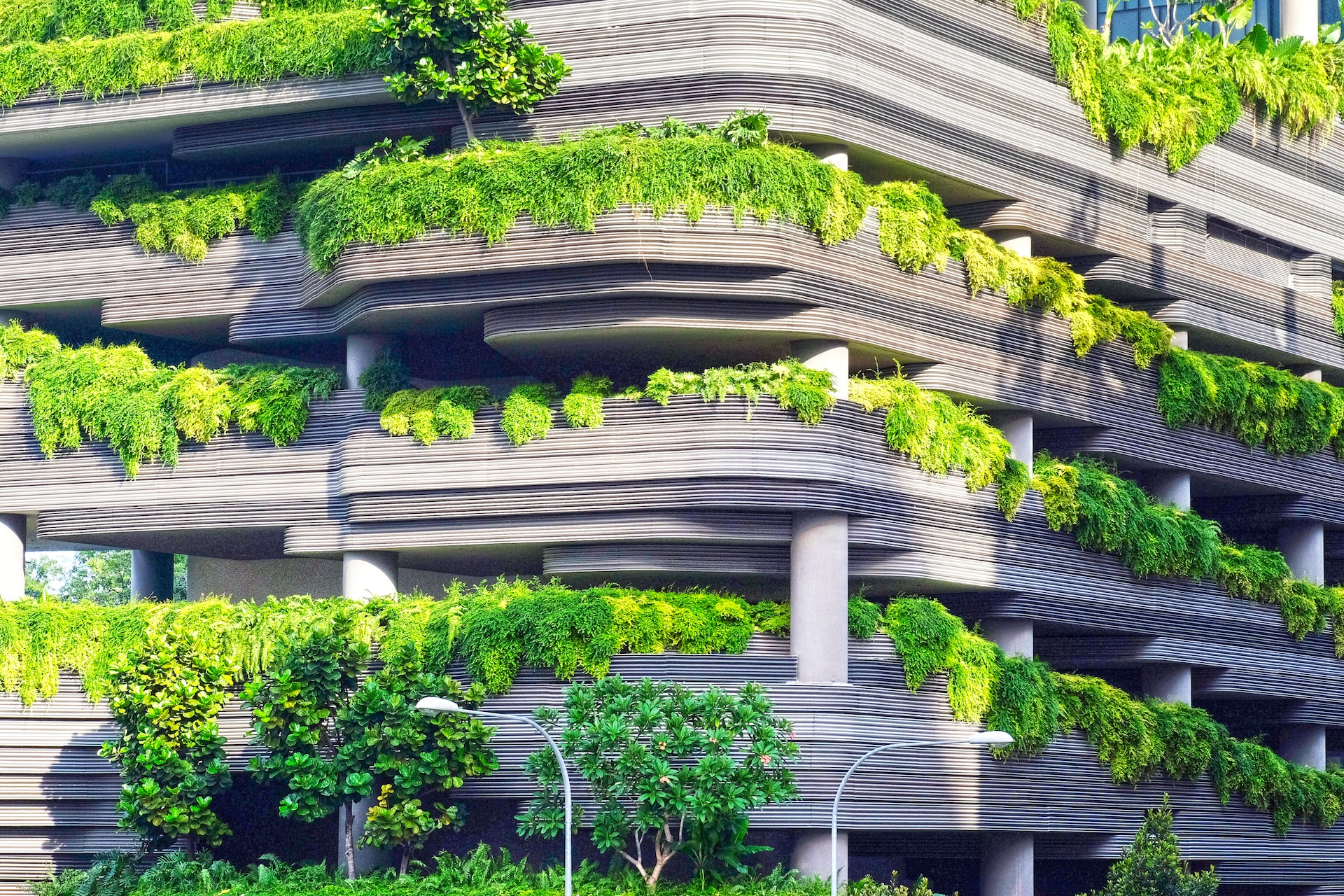Purposeful Buildings to Serve the People Sustainably
Shelter has been important since the dawn of human civilization. In the pre-historic era, human settlements were made of wood, leaves and animal hides. As time passed by, the creation of tools helped people build homes made of stone, brick and concrete. Some even surpassed this by constructing marvels of the Middle Ages – ornate castles and cathedrals.
The start of the industrial era brought about significant changes in building materials and techniques. Tall skyscrapers began to be built using cast iron and steel. Amid these times, construction of buildings also became faster and more efficient with the help of prefabrication and mass production.
The buildings of today have become large furnaces spewing carbon into the atmosphere. Keeping buildings cool or warm puts an insurmountable stress on energy supply and the environment. On an average, 40% of all energy consumption and a similar percentage of greenhouse gas (GHG) emissions is accounted for by buildings.
This raises a crucial need to not only reduce the energy consumption of buildings as these are structures that will be in use for decades; but also ensure that retrofitting the buildings with greener alternatives will ensure alternate lifestyles with good-paying jobs.
Green Buildings
Real estate developers, building owners and governments are increasingly realizing the need to reduce the carbon footprint generated by buildings.
Many are now designing new buildings, keeping sustainability in mind. Both environmentally- and people-friendly building developments are on the rise. Buildings provide unrestricted access to people from every walk of life, regardless of their caste, age and gender. In addition to it, buildings of today are designedto encourage co-living with the surrounding biodiversity (flora and fauna).
The poster child or the pioneer in this case is Singapore. Its urban planners and architects are taking a conscious effort to weave in nature throughout the city, ensuring to implement plant life in any form, whether through green roofs, cascading vertical gardens or green walls.
Across the world, we can also see its increasing use in France. In 2015, France approved a law, requiring new buildings built in commercial areas to either be partially covered in plants or solar panels. Not just for its appearance, but green roofs do also have other benefits. It reduces the amount of energy needed to heat a building in winter or cool it in summer. Additionally, it helps retain rainwater, reducing problems with runoff and has an isolating effect in keeping urban areas relatively cooler.
Energy security is a growing issue amid geopolitical tensions and uncertain macroeconomic headwinds. This is being made worse by the growing demand for energy in keeping residential and commercial buildings operating. Some governments are taking innovative steps in shifting to renewable energy to address their growing energy demands.
In 2022, the EU announced a mandate for rooftop solar on commercial and public buildings by 2027, and for residential buildings by 2029. “I know this is ambitious, but it is realistic, we can do it,” said European Commission President Ursula von der Leyen.
Prime Exemplars
In the Middle East, Dubai and Abu Dhabi are prime examples of instituting green and sustainable buildings. Dubai launched its green building rating system, Al Safat in 2016, following its green building code in 2014. Buildings will be rated into four classifications – platinum, gold, silver and bronze; requiring buildings to achieve a minimum of bronze category to get permits.
“The launch of Al Safat rating system complements the green building project perfectly, with its most prominent goals to reduce the consumption of electricity by 20%, water consumption by 15%, carbon dioxide emissions by 20%, and waste by as much as 50%,” said Khalid Mohammad Saleh Al Mullah, director of the Buildings Department at the Dubai Municipality.
Across the town, Abu Dhabi has also been taking active steps in building greener and more sustainable buildings. The country launched Estidama, an Arabic word meaning sustainability in 2010, to drive sustainable development in the emirate by setting standards for energy efficiency, water conservation and other sustainability measures. Following this, the country’s planning council launched the pearl rating system for communities, buildings and villas in Abu Dhabi.
The rating system approved development projects based on four sustainability pillars – environmental, economic, social, and cultural. Only buildings that have received the pearl rating system approval are considered for issuance of building permits.
Strategies implemented by these nations show that a well-rounded development can be achieved from a purposeful building that is made taking a holistic approach in recognizing outcomes that are not only good for the environment, but also for the society and the economy at large. An exemplar for others to follow suit.
Photo Captions: The future of buildings is green.




